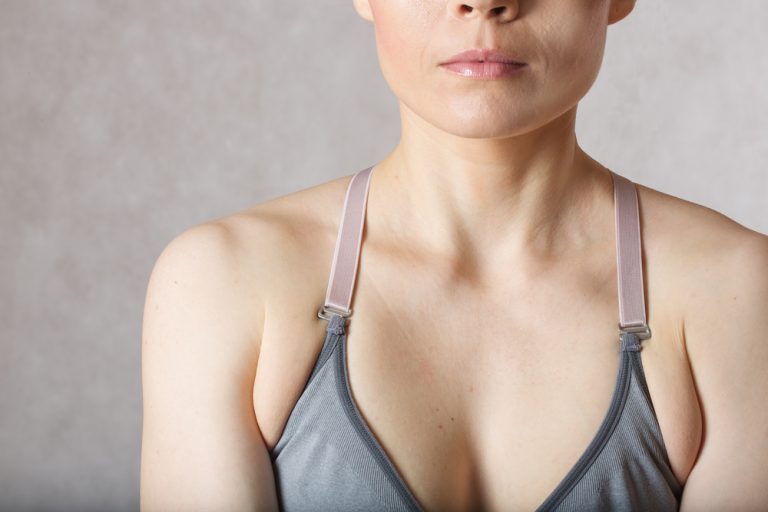Choosing Your Path: Exploring Lipectomy vs Liposuction Options
Posted on: March 29, 2024
Lipectomy vs Liposuction Explained
Surgical Lipectomy
Lipectomy, often known as surgical lipectomy or lipo, involves more than just fat removal from areas like the belly and eyelids; it targets fatty tissue specifically. It targets both fatty tissue and skin, making it a more invasive procedure like lipo in the surgical lipectomy group, especially around the belly. Surgeons in the surgical lipectomy group perform this operation under general anesthesia due to its complexity, involving suction and removal for the patient. It’s ideal for individuals with excess skin and fatty tissue after significant weight loss, especially in the belly area, where fat cells have been reduced by the surgical lipectomy group.
Patients choose lipectomy when they need substantial body contour changes. This process not only eliminates unwanted fat through suction but also removes excess skin, tightening the area, including the belly and eyelids. The results can be dramatic, offering a more toned and defined appearance.
Liposuction Technique
Liposuction, on the other hand, is less invasive. It focuses solely on removing fat through suction. This procedure, involving the removal of eyelids, can be performed under local anesthetic, making it safer and requiring less recovery time compared to lipectomy, although individual results may vary.
Lipo targets specific areas of fat accumulation removal, such as the abdomen, thighs, or arms, though individual results may vary. It does not address excess skin. Therefore, it’s best suited for patients with good skin elasticity looking for minor contouring and fat removal.
Key Differences
The primary difference between these two procedures lies in their approach, removal, and outcome. Lipectomy includes skin removal, offering a solution for those with loose or hanging skin post-weight loss. Liposuction provides a simpler method for the removal of stubborn fat pockets without addressing skin issues.
Both procedures have their place in cosmetic surgery, catering to different needs and expectations. Understanding these differences helps patients make informed decisions about which option might suit them best.
Abdominoplasty vs Lipectomy Differences
Specific Target
Abdominoplasty, also known as a tummy tuck, is a specialized form of lipectomy. It focuses solely on the abdomen. This procedure aims to reshape and firm the abdominal region.
It involves removing excess skin and fat. A significant incision is made to achieve this goal. The extent of this incision varies based on the type of abdominoplasty performed.
Procedure Variants
There are different types of abdominoplasty, each designed for specific goals.
Mini abdominoplasty targets the area below the navel. It involves a smaller incision and less recovery time. Full abdominoplasty requires a larger incision across the lower abdomen. It’s more comprehensive, addressing both upper and lower abdominal areas.
Extended abdominoplasty goes beyond the abdomen to include flanks and sometimes lower back areas. This is for individuals needing significant reshaping and tightening.
Muscle Repair
One unique aspect of abdominoplasty is its ability to repair torn abdominal muscles.
This distinguishes it from other forms of lipectomy that might not address muscle structure. Abdominoplasty can restore muscle integrity, crucial for those with separated or weakened abdominal muscles due to pregnancy or weight fluctuations.
Types of Lipectomies Overview
Arm Lifts
Brachioplasty, or arm lifts, target the upper arms. They remove excess skin and fat. This procedure is for those unhappy with sagging skin due to weight loss or aging.
Patients see improved contours and feel more confident in sleeveless outfits. Recovery varies but generally spans a few weeks.
Thigh Lifts
Thighplasty focuses on the inner or outer thighs. It eliminates loose skin and fat, enhancing leg shape.
This surgery suits individuals after significant weight loss. The outcome is tighter, more youthful-looking thighs. Post-surgery care is crucial for optimal healing.
Body Lifts
Body lifts are comprehensive procedures. They address excess fat and skin around the waistline.
These operations are ideal for those with significant body changes from weight loss. Patients experience a dramatic transformation, gaining a smoother, firmer body profile. Recovery time can be extensive but rewarding.
Fleur-de-Lis Abdominoplasty
For extensive reconstruction, there’s Fleur-de-Lis abdominoplasty. It’s unique for its scar pattern resembling the fleur-de-lis symbol.
This technique is beneficial when traditional abdominoplasty isn’t enough. It effectively tightens both vertical and horizontal dimensions of the abdomen. The result is a significantly reshaped abdominal area, though it comes with a more noticeable scar.
Causes of Fat Accumulation
Weight Loss
After significant weight loss, many people face an unexpected challenge. They might find their skin sagging and not fitting the slimmer shape beneath. This occurs because the skin has been stretched over time to accommodate excess fat. When that fat is suddenly lost, the skin, lacking elasticity, fails to shrink back. In these cases, fat removal alone isn’t enough. Surgical intervention becomes necessary to remove the excess skin and achieve a more toned appearance.
Aging Process
As individuals age, their bodies produce less collagen and elastin. These are crucial proteins that keep the skin firm and elastic. Without them, skin begins to sag, contributing to a more aged appearance. This natural decline in protein production can make fatty tissue more visible and harder to get rid of through diet and exercise alone. For some, this means turning to surgical options like lipectomy or liposuction for fat removal.
Genetic Factors
Genetics play a significant role in how and where our bodies store fat. Some people might find that no matter how much they diet or exercise, they can’t seem to lose fat in certain areas due to their genetic predisposition. This can lead to frustration and the feeling that surgery is the only option left for achieving their desired body shape.
Impact of Lifestyle Choices
Diet and Exercise
Diet and exercise play crucial roles in shaping our bodies. They can prevent or reduce the accumulation of stubborn fat deposits. A balanced diet helps manage weight and supports overall health. Regular exercise, on the other hand, tones muscles and improves body contour.
People who lead active lifestyles tend to have better skin elasticity. This means their skin can bounce back more easily after weight loss. For some, this reduces the need for surgical intervention like lipectomy or liposuction.
Skin Elasticity
Skin elasticity is vital for a firm, youthful appearance. It’s influenced by genetics, age, and lifestyle choices. Smoking, poor diet, and lack of exercise can harm skin health. Healthy habits promote better skin elasticity.
This resilience of the skin plays a significant role post-weight loss. Patients with good skin elasticity may see improved results without needing surgery. However, in cases where elasticity is lacking, procedures like liposuction could offer a solution.
Post-Surgery Lifestyle
Maintaining a healthy lifestyle post-surgery is essential for sustaining results. Lipectomy and liposuction remove fat cells from specific areas. But without proper care, patients can regain fat in other parts of the body.
A balanced diet and regular exercise are key to keeping the desired shape long-term. They help manage the patient’s weight and ensure lasting outcomes from the operation.
Understanding Body Changes Post-Pregnancy
Skin Stretching
After pregnancy, many women notice their belly skin has stretched. This can lead to sagging that doesn’t always bounce back with exercise.
Recovery from this stretching varies. Some find their skin gradually tightens over time. Others may not see much improvement, feeling self-conscious about the changes.

Muscle Weakening
The abdominal muscles often weaken or separate during pregnancy. This condition, known as diastasis recti, contributes to a bulging belly post-pregnancy.
Exercises can help strengthen these muscles again. However, for some, the separation is too great, and surgery becomes an option.
Surgical Restoration
For mothers looking to restore their pre-pregnancy shape, surgical options are available. Lipectomy and liposuction are two procedures often discussed.
Abdominoplasty, specifically, plays a crucial role in repairing torn abdominal muscles post-pregnancy. It not only removes excess skin but also tightens the abdominal wall. This surgery offers a more comprehensive solution for those with significant muscle separation and skin sagging.
Genetic Factors in Body Composition
Fat Storage
Our bodies decide where to store fat based on genetics. Some people might find excess weight clinging to their hips, while others see it around their abdomen. This distribution is often inherited from our parents, making certain body shapes more prevalent within families.
It’s not just about where the fat is stored but also about how easily we gain or lose it. Metabolism rates vary greatly among individuals, heavily influenced by genetic factors. This means that for some, shedding weight can be a significant challenge, despite rigorous diet and exercise.
Family Genetics
Family genetics play a crucial role in determining one’s body composition and the likelihood of needing surgical intervention like lipectomy or liposuction. If close relatives have undergone such procedures, there’s a higher chance you might need them too.
This doesn’t mean surgery is inevitable. However, understanding your genetic predisposition can help set realistic expectations about what diet and exercise alone can achieve.
Surgery’s Role
Diet and exercise have their limits, especially when dealing with genetically influenced body shapes. No amount of healthy eating or gym sessions can change where your body prefers to store fat. This is where surgical options like lipectomy and liposuction become valuable.
They offer a solution to reshape areas that are otherwise unresponsive to lifestyle changes. It’s important to consult with professionals who understand the intricate relationship between genetics, body composition, and surgical outcomes.
Age-Related Body Transformations
Skin Elasticity
As people age, their skin loses elasticity. This natural process can lead to loose skin around various body areas such as the arms, thighs, and abdomen. The formation of loose skin is more pronounced in individuals who experience significant weight loss.
The decrease in skin elasticity also affects the facial area, particularly the eyelids and cheeks. Over time, this can result in a tired or aged appearance.
Fat Distribution
With age, fat distribution in the body shifts. Adults may notice increased fat accumulation around the hips, flanks, and abdomen. These changes are not only cosmetic but can also impact one’s health.
For women, menopause often accelerates these transformations. It leads to a more centralized fat distribution, increasing risks associated with obesity.
Surgical Interventions
As non-surgical methods like diet and exercise become less effective with age, many turn to surgical interventions. Lipectomy, which removes excess skin and fat, becomes a viable option for addressing age-related body changes.
This procedure can target multiple areas including the upper arms, thighs, and hips. However, it involves anesthesia and may leave a scar.
Preventative Measures
To mitigate age-related body transformations, maintaining a healthy lifestyle is crucial. Regular exercise and a balanced diet can slow down the loss of skin elasticity and abnormal fat distribution.
However, genetics play a significant role in how bodies age. Preventative measures have their limitations, underscoring the importance of realistic expectations.
Final Remarks
Navigating the options of lipectomy and liposuction can be overwhelming, but understanding their differences and how they cater to various needs is crucial. You’ve seen how factors like age, genetics, and lifestyle choices play into fat accumulation and body changes. Each procedure offers unique benefits, whether you’re looking at the comprehensive reshaping that comes with lipectomies or the targeted fat reduction of liposuction. Remember, the choice between these surgeries should align with your health goals and aesthetic desires. Making an informed decision involves weighing the pros and cons, considering your body’s unique characteristics, and consulting with a trusted medical professional.
Deciding to alter your body for any reason is a big step. Ensure you’re equipped with all the necessary information to choose wisely. If you’re pondering which path to take for your body transformation journey, reach out to a certified surgeon today. Start your journey towards a happier, healthier you.
Frequently Asked Questions
What is the difference between lipectomy and liposuction?
Lipectomy involves removing excess skin and fat, often after significant weight loss, while liposuction focuses on removing fat from specific areas to contour the body. Both aim for a more aesthetically pleasing body shape but differ in their approaches and outcomes.
Can lipectomy be considered as an alternative to abdominoplasty?
Yes, in some cases. While abdominoplasty (tummy tuck) specifically targets the abdominal area to remove excess skin and fat, a lipectomy can address similar issues across different parts of the body. The choice between the two depends on individual needs and desired outcomes.
What are the main types of lipectomies?
Lipectomies can vary based on the target area: abdominal lipectomy (often part of abdominoplasty), thigh lift, arm lift, and lower body lifts. Each type focuses on removing excess skin and fat from specific areas to improve body contours.
How does lifestyle affect fat accumulation?
Lifestyle choices like diet, exercise habits, and stress levels significantly impact fat accumulation. Poor diet and lack of physical activity contribute to increased fat storage, while stress can lead to weight gain through hormonal changes.
How does pregnancy change a woman’s body?
Pregnancy causes significant changes including weight gain, stretched skin, and altered body composition. These changes can persist post-pregnancy, leading many women to consider cosmetic procedures like lipectomy or liposuction for restoring their pre-pregnancy body shape.
Are genetic factors important in determining body composition?
Yes, genetics play a crucial role in determining where your body stores fat, muscle distribution, metabolism rate, and overall body shape. Understanding your genetic predisposition can help tailor lifestyle choices for better health outcomes.
How do age-related transformations affect the body?
As you age, your metabolism slows down leading to easier fat accumulation. Muscle mass decreases over time while skin elasticity diminishes, causing sagging. These natural processes often increase interest in cosmetic procedures such as lipectomy or liposuction to maintain a youthful appearance.





